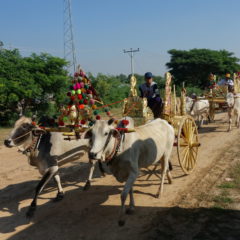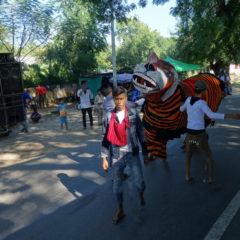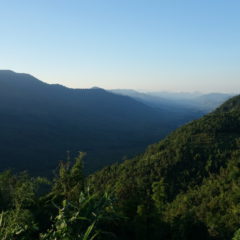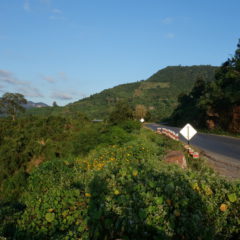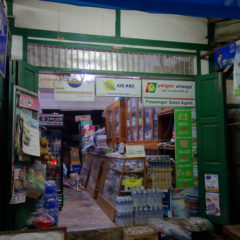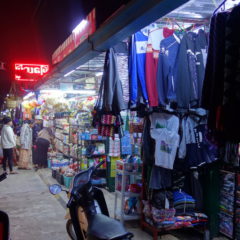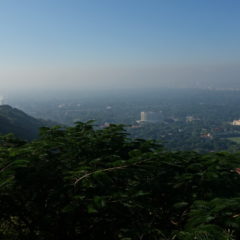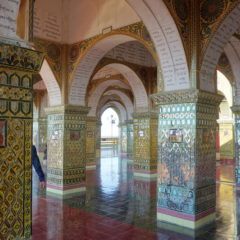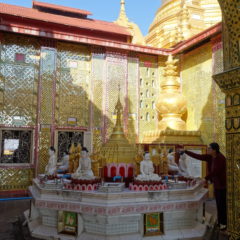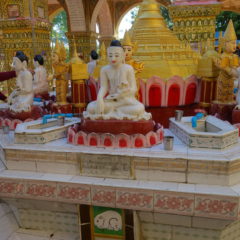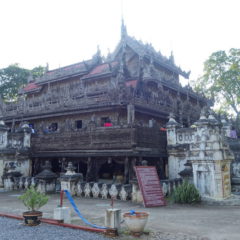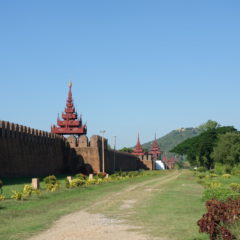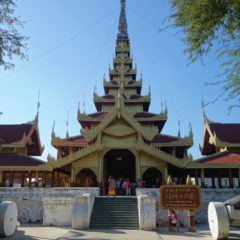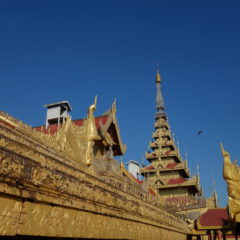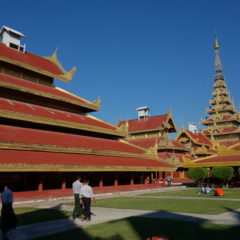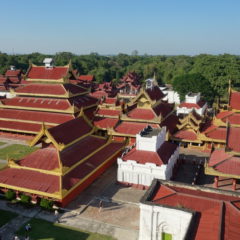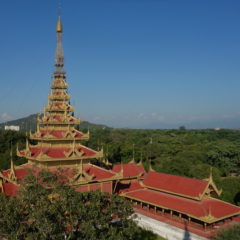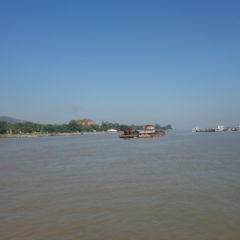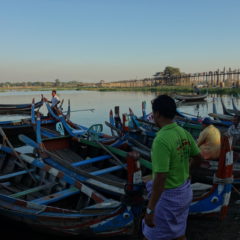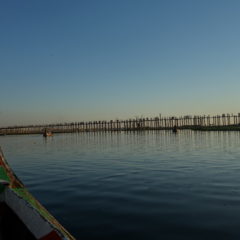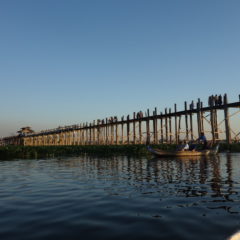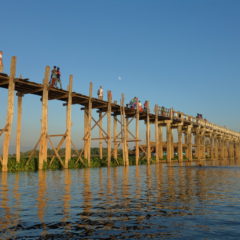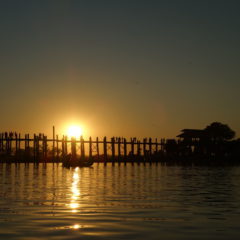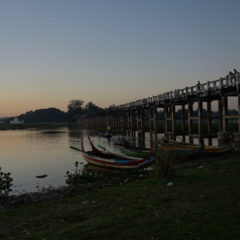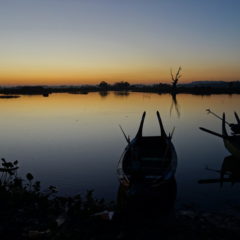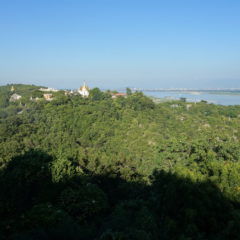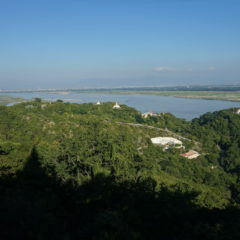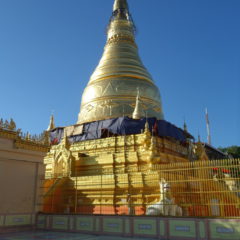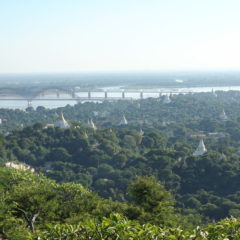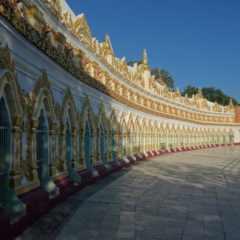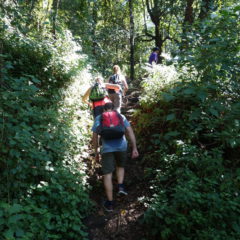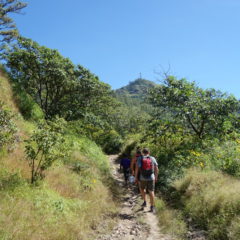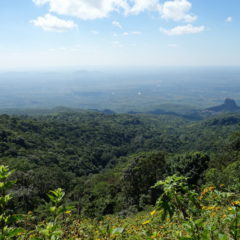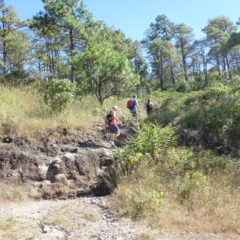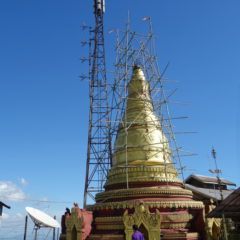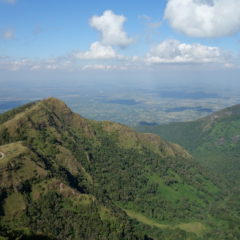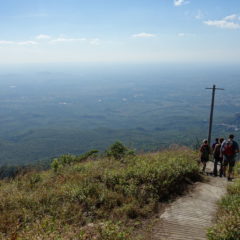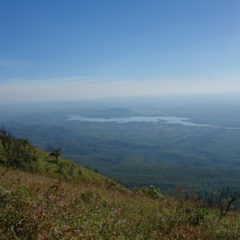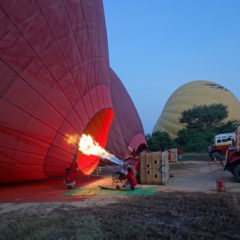After the balloon flight earlier in the day, it was now time to get up even higher – this time climbing Mt. Popa (ပုပ္ပားတောင်) to a soaring 1518m above sea level.
After (a second) breakfast we took a mini bus from our base in Nyaung U over to Popa village. Here we made it to the trail head and got going. An elevation gain of 900m was ahead of us; with the one-way distance provided as 11km (though – in reality we ended up taking shortcuts constantly, resulting in a quicker, but also steeper climb).
The hike started as a walk through the dense jungle, though after the half-way point it became gradually clearer and clearer and the trees smaller. We eventually had the first views of the surrounding area – including a direct via of the pedestal hill of Taung Kalat and the Tuyin Taung Pagoda on its top.
We continued higher and higher on Mt. Popa – until we eventually made it to the tree limit allowing for even better views. Views from the top were a disappointment, given that the top is used as a telecommunication station and as such is covered by all sorts of buildings. We also found a small stupa on top of the mountain, which made a good background for a late lunch.
We made it back following the same way as on the way up. However as the bus was waiting for us at a different location, we were spared an altitude difference of around 200m.
From Mt.Popa we made it back towards Nyaung U with a welcome stop at a swimming pool on the way to cool down after the hike; we made it back to the hotel well after dark.
Today has been a fairly busy day … from the adventure of a hot air balloon ride to the hike up a mountain – both providing great perspectives of the surrounding landscape – with a fairly close-by view from the balloon and the big picture from the top of Mt.Popa – overall a busy, but more than worthwhile day.
